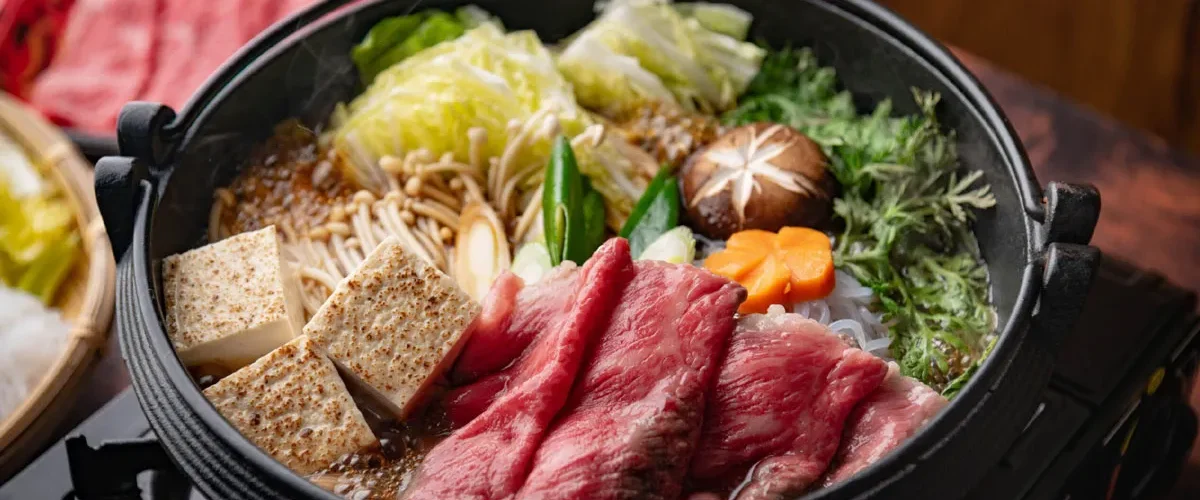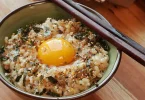Beef Sukiyaki Hotpot Recipe – Japanese Special

Beef Sukiyaki Hotpot is a beloved Japanese hotpot dish featuring paper-thin beef, shirataki noodles, tofu, and fresh vegetables simmered in a rich sukiyaki broth. The sweet and savory harmony of soy sauce, sugar, mirin, and dashi makes every bite comforting and full of traditional Japanese flavors. Served bubbling at the table, this easy Japanese beef recipe is perfect for cozy family dinners or special gatherings.
- Prep Time20 min
- Cook Time20 min
- Total Time40 min
- Cuisine
- Course
Katsu Curry Ingredients
For Sukiyaki Broth:
- 1/2 cup soy sauce
- 1/4 cup mirin
- 1/4 cup sake (or additional mirin)
- 2–3 tbsp sugar
- 1 cup dashi stock (or chicken broth)
For Hotpot:
- 400–500g thinly sliced beef (ribeye or sirloin preferred)
- 200g firm tofu, cubed
- 1 pack shirataki noodles (konjac noodles), rinsed
- 1 medium onion, sliced
- 1 cup napa cabbage, chopped
- 1 cup shiitake or enoki mushrooms
- 2 stalks green onions, cut into 2-inch pieces
- 1 small carrot, sliced
Optional:
- raw egg (for dipping, traditional)
Beef Sukiyaki Hotpot Instructions:
Mix soy sauce, mirin, sake, sugar, and dashi to prepare the broth.
Heat a large skillet or hotpot dish; add a little oil if needed.
Sear some slices of beef lightly, just until they start to brown.
Pour a portion of the sukiyaki broth over the beef.
Add tofu, vegetables, mushrooms, and noodles into sections of the pot.
Simmer over medium heat, adding more broth as needed while cooking.
As ingredients soften and absorb flavor, add remaining beef to cook briefly.
Traditionally, dip cooked items in lightly beaten raw egg before eating (optional).
Recipe Notes :
Use thinly sliced beef like ribeye or sirloin for quick cooking and tenderness.
Shirataki noodles substitution: udon or rice noodles also work well.
If you can’t find dashi, chicken broth is a good replacement.
Add seasonal vegetables like bok choy or enoki mushrooms for extra texture.
Traditional dipping uses raw egg, but it’s optional for safety based on preference.
Cook ingredients in stages to maintain the hotpot flavors and prevent overcooking.







